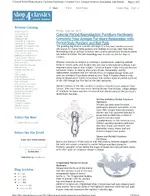Silver Tree Chaser
Bronze Member
Here are some of my recent finds. This is my first post for 2014.
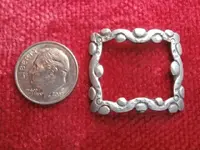
The site that produced those gold cufflinks from last year is still producing some quality finds – a solid silver shoe buckle frame. The owner of the long-gone country estate that once stood on the site was the 2nd wealthiest person in the colony back in the 1760’s. The decorative buckle is small in size and probably belonged to woman or a child. The steel chape & tongue rusted out long ago. It cleaned up really well. It has no maker’s marks. I’ve found buckles with silver gilt on the front, but this is my very first solid silver buckle!
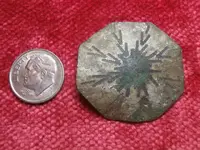
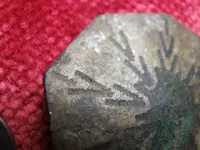
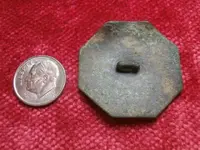
I initially judged the octagonal button to date near the late-18th Century, and any other earlier dating is just wishful thinking. Please let me know your opinion with a reality check. 18th Century - Right?
While the site has produced material dating up to the mid-19th Century, other finds specifically dating from the mid-to-late 17th Century are fairly well-represented. If you check the provided link, finds-UK, similar octagonal buttons are dated from 1600-1700. Is their dating wrong?
Record ID: NLM-11A8E7 - POST MEDIEVAL button - Database
The button is made from a copper alloy with silver gilt. Surprisingly, the button was hand-decorated after being produced, as the silver finish was lost in applying the engraved markings . I did see some similarities in the style of decoration from brass bracelets used by the Niantic Tribe of Southwestern RI & Connecticut. I have checked many 18th Century English flat button designs online, and no crude, hand-engraved samples can be found, although the design is perhaps the common bursting sun design of the late 18th Century.
Is the button possible of 17th Century origin? Was it possibly altered by a Native American for adornment? My research indicates that a considerable amount of activity occurred at the site during King Philip’s War, 1675-1676. After the Great Swamp fight in Narragansett, colonial troops injured in the fighting spent a prolonged period time on the site recovering from their wounds. In addition, Capt. Benjamin Church frequented the site while taking in many captives near the end of the conflict. Any input is appreciated.
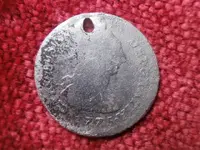
Here’s a really worn and tired 1775 one-reale Spanish silver coin. Judging by the shape of the hole used to tie the coin for safekeeping, it was carried around quite a bit. I like the hole; it gives the coin a little bit of character.
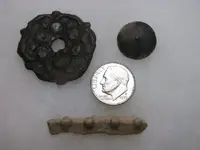
Here’s a 17th Century nipple button (really like the early age of these buttons), lead waste from a musket ball group mold, which I recognized as soon as I pulled it from the hole, and last but not least, a 16th back plate for a drawer pull handle. It took just a little research to find an exact match on a website for early furniture. It dates from 1695.
Here's the info from the website
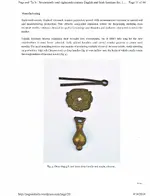
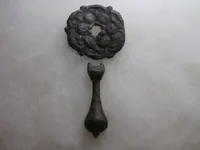
I believe that I found the matching teardrop handle for the back plate in January. I don’t believe I’ll be recovering the entire wooden drawer any time soon!
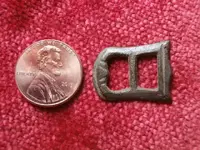
This appears to be a spur buckle, but I’m not sure of the age, probably 18th Century; it was found at the gold cufflink site.
Good Hunting to All
Thanks for all replies

The site that produced those gold cufflinks from last year is still producing some quality finds – a solid silver shoe buckle frame. The owner of the long-gone country estate that once stood on the site was the 2nd wealthiest person in the colony back in the 1760’s. The decorative buckle is small in size and probably belonged to woman or a child. The steel chape & tongue rusted out long ago. It cleaned up really well. It has no maker’s marks. I’ve found buckles with silver gilt on the front, but this is my very first solid silver buckle!



I initially judged the octagonal button to date near the late-18th Century, and any other earlier dating is just wishful thinking. Please let me know your opinion with a reality check. 18th Century - Right?
While the site has produced material dating up to the mid-19th Century, other finds specifically dating from the mid-to-late 17th Century are fairly well-represented. If you check the provided link, finds-UK, similar octagonal buttons are dated from 1600-1700. Is their dating wrong?
Record ID: NLM-11A8E7 - POST MEDIEVAL button - Database
The button is made from a copper alloy with silver gilt. Surprisingly, the button was hand-decorated after being produced, as the silver finish was lost in applying the engraved markings . I did see some similarities in the style of decoration from brass bracelets used by the Niantic Tribe of Southwestern RI & Connecticut. I have checked many 18th Century English flat button designs online, and no crude, hand-engraved samples can be found, although the design is perhaps the common bursting sun design of the late 18th Century.
Is the button possible of 17th Century origin? Was it possibly altered by a Native American for adornment? My research indicates that a considerable amount of activity occurred at the site during King Philip’s War, 1675-1676. After the Great Swamp fight in Narragansett, colonial troops injured in the fighting spent a prolonged period time on the site recovering from their wounds. In addition, Capt. Benjamin Church frequented the site while taking in many captives near the end of the conflict. Any input is appreciated.

Here’s a really worn and tired 1775 one-reale Spanish silver coin. Judging by the shape of the hole used to tie the coin for safekeeping, it was carried around quite a bit. I like the hole; it gives the coin a little bit of character.

Here’s a 17th Century nipple button (really like the early age of these buttons), lead waste from a musket ball group mold, which I recognized as soon as I pulled it from the hole, and last but not least, a 16th back plate for a drawer pull handle. It took just a little research to find an exact match on a website for early furniture. It dates from 1695.
Here's the info from the website


I believe that I found the matching teardrop handle for the back plate in January. I don’t believe I’ll be recovering the entire wooden drawer any time soon!

This appears to be a spur buckle, but I’m not sure of the age, probably 18th Century; it was found at the gold cufflink site.
Good Hunting to All
Thanks for all replies
Amazon Forum Fav 👍
Upvote
13




 Oh well, there's always the next hunt, the next field, the next signal.
Oh well, there's always the next hunt, the next field, the next signal.


